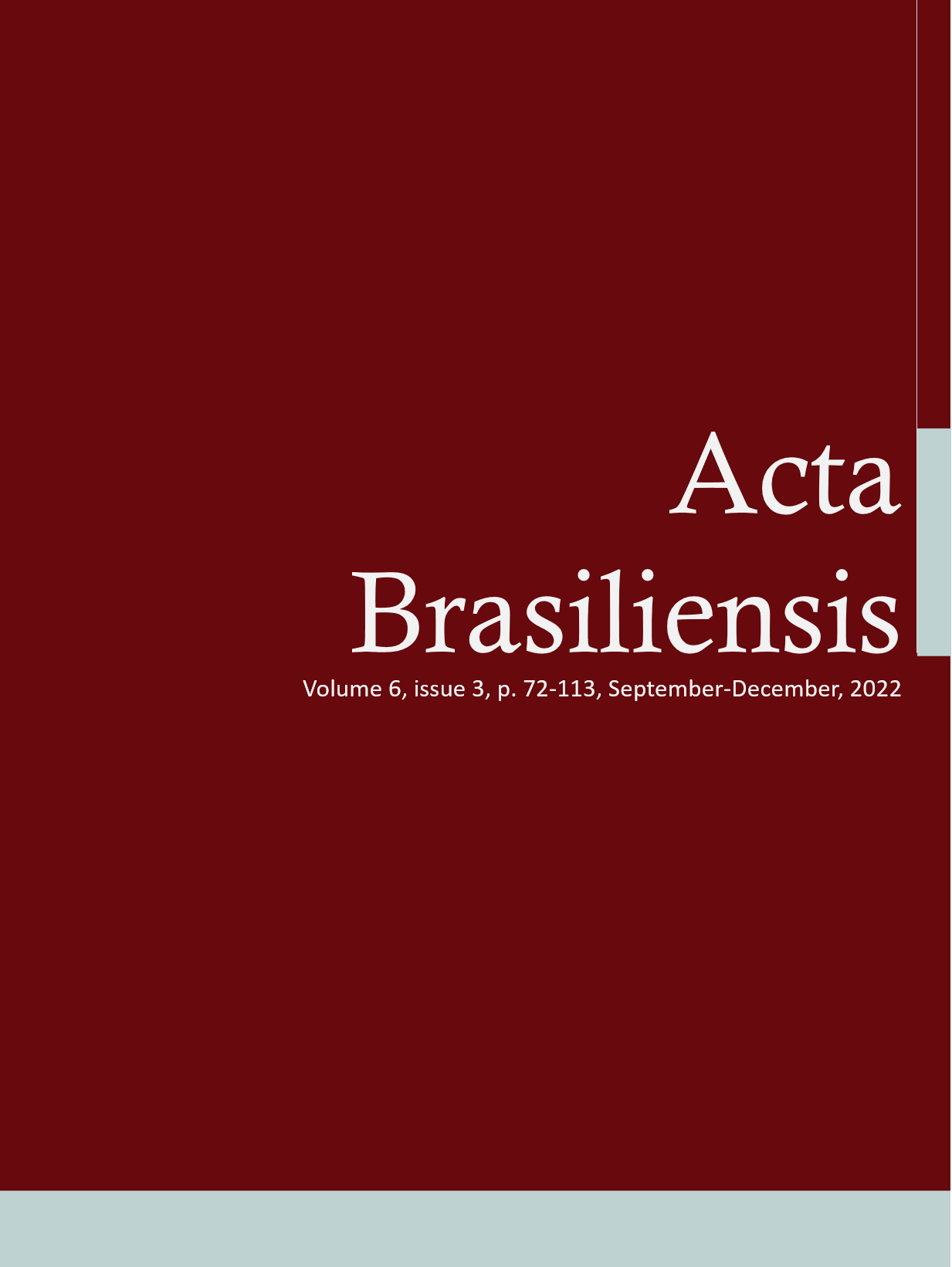Biosorption of Copper (II) Ions From Aqueous Solution Onto Pantoea agglomerans Isolated From Water Containing High Amount Of Boron Element
Abstract
Heavy metal pollution is an serious environmental problem because they have toxic effects on living organisms. In recent years, the use of microbial biosorbents to remove heavy metal pollution have studied. Many biological materials are used to remove copper ions. In this study, the biosorption capacity of lyophilized Pantoea agglomerans for Cu (II) ions were investigated under various conditions (initial pH, contact time, initial heavy metals ion concentration). The monocomponent biosorption data have been analyzed using isotherm (Freundlich and Langmuir) and kinetic models. The highest copper uptake capacity of the biomass was obtained at the initial copper concentration of 250 mgL-1 at pH 5.0 and contact time 90th minute. The equilibrium data correlated well with the Langmuir and Freundlich model. It was found that the pseudo-second-order kinetic model fitted the experimentally obtained data. Liyofilized P. agglomerans biomass appears to be an inexpensive and efficient biosorbent for the removal of Cu (II) from aqueous solutions.
Downloads
References
Ayangbenro, A. S., & Babalola, O. O. (2017). A new strategy for heavy metal polluted environments: a review of microbial biosorbents. International Journal of Environmental Research and Public Health, 14(1), 94. https://doi.org/10.3390/ijerph14010094
Azhar, U., Ahmad, H., Shafqat, H., Babar, M., Munir, H. M. S., Sagir, M., ... & Khoo, K. S. (2022). Remediation techniques for elimination of heavy metal pollutants from soil: A review. Environmental Research, 113918. https://doi.org/10.1016/j.envres.2022.113918
Bennett, J. E., Dolin, R., & Blaser, M. J. (2019). Mandell, douglas, and bennett's principles and practice of infectious diseases E-book. Elsevier Health Sciences. https://doi.org/10.1016/C2012-1-00075-6
Donnenberg MS. (2019) Enterobacteriaceae., in Bennett, J., Dolin R., Blaser, MJ. Mandell, Douglas, and Bennett's Principles and Practice of Infectious Diseases (9. Ed.),Volume 2, , Pages 2503-2517.
Blaga, A. C., Zaharia, C., & Suteu, D. (2021). Polysaccharides as support for microbial biomass-based adsorbents with applications in removal of heavy metals and dyes. Polymers, 13(17), 2893. https://doi.org/10.3390/polym13172893
Celebi, N., Nadaroglu, H., Kalkan, E., & Kotan, R. (2016). Removal of copper from copper-contaminated river water and aqueous solutions using Methylobacterium extorquens modified Erzurum clayey soil. Archives of Environmental Protection, 42(4), 58-69. 10.1515/aep-2016-0035
Davis, T. A., Volesky, B., & Mucci, A. (2003). A review of the biochemistry of heavy metal biosorption by brown algae. Water Research, 37(18), 4311-4330. https://doi.org/10.1016/S0043-1354(03)00293-8
Freundlich, H. (1907). Über die adsorption in lösungen. Zeitschrift für Physikalische Chemie, 57(1), 385-470. https://doi.org/10.1515/zpch-1907-5723
Langmuir, I. (1918). The adsorption of gases on plane surfaces of glass, mica and platinum. Journal of the American Chemical Society, 40(9), 1361-1403.
Liu, H., & Fang, H. H. (2002). Characterization of electrostatic binding sites of extracellular polymers by linear programming analysis of titration data. Biotechnology and Bioengineering, 80 (7), 806-811. https://doi.org/10.1002/bit.10432
Lu, W. B., Shi, J. J., Wang, C. H., & Chang, J. S. (2006). Biosorption of lead, copper and cadmium by an indigenous isolate Enterobacter sp. J1 possessing high heavy-metal resistance. Journal of Hazardous Materials, 0(1-3), 80-86. https://doi.org/10.1016/j.jhazmat.2005.10.036
Masood, F., & Malik, A. (2011). Biosorption of metal ions from aqueous solution and tannery effluent by Bacillus sp. FM1. Journal of Environmental Science and Health, Part A, 46(14), 1667-1674. https://doi.org/10.1080/10934529.2011.623648
Mendez, M. O., Neilson, J. W., & Maier, R. M. (2008). Characterization of a bacterial community in an abandoned semiarid lead-zinc mine tailing site. Applied and Environmental Microbiology, 74(12), 3899-3907. https://doi.org/10.1128/AEM.02883-07
Mohite, B. V., Koli, S. H., & Patil, S. V. (2018). Heavy metal stress and its consequences on exopolysaccharide (EPS)-producing Pantoea agglomerans. Applied Biochemistry and Biotechnology, 186(1), 199-216. https://doi.org/10.1007/s12010-018-2727-1
Ozdemir, G., Ceyhan, N., Ozturk, T., Akirmak, F., & Cosar, T. (2004). Biosorption of chromium (VI), cadmium (II) and copper (II) by Pantoea sp. TEM18. Chemical Engineering Journal, 102(3), 249-253. https://doi.org/10.1016/j.cej.2004.01.032
Redha, A. A. (2020). Removal of heavy metals from aqueous media by biosorption. Arab Journal of Basic and Applied Sciences, 27(1), 183-193. https://doi.org/10.1080/25765299.2020.1756177
Rizvi, A., Ahmed, B., Zaidi, A., & Khan, M. (2020). Biosorption of heavy metals by dry biomass of metal tolerant bacterial biosorbents: an efficient metal clean-up strategy. Environmental Monitoring and Assessment, 192 (12), 801. https://doi.org/10.1007/s10661-020-08758-5
Saravanan, A., Karishma, S., Kumar, P. S., Varjani, S., Yaashikaa, P. R., Jeevanantham, S., ... & Reshma, B. (2021). Simultaneous removal of Cu (II) and reactive green 6 dye from wastewater using immobilized mixed fungal biomass and its recovery. Chemosphere, 271, 129519. https://doi.org/10.1016/j.chemosphere.2020.129519
Siddiquee, S., Aishah, S. N., Azad, S. A., Shafawati, S. N., & Naher, L. (2013). Tolerance and biosorption capacity of Zn 2+, Pb 2+, Ni 3+ and Cu 2+ by filamentous fungi (Trichoderma harzianum, T. aureoviride and T. virens). Advances Bioscience and Biotechnology .4 (4): 570-583. 10.4236/abb.2013.44075
Staszewski, T., Malawska, M., Studnik-Wójcikowska, B., Galera, H., & Wiłkomirski, B. (2015). Soil and plants contamination with selected heavy metals in the area of a railway junction. Archives of Environmental Protection, 41(1), 35-42. 10.1515/aep-2015-0005
Sethuraman, P., & Kumar, M. D. (2011). Biosorption kinetics of Cu (II) ions removal from aqueous solution using bacteria. Pakistan Journal of Biological Sciences: PJBS, 14(5), 327-335. 10.3923/pjbs.2011.327.335
Sun, P., Hui, C., Bai, N., Yang, S., Wan, L., Zhang, Q., & Zhao, Y. (2015). Revealing the characteristics of a novel bioflocculant and its flocculation performance in Microcystis aeruginosa removal. Scientific Reports, 5(1), 17465. https://doi.org/10.1038/srep17465
Wang, P., Yuan, Y., Xu, K., Zhong, H., Yang, Y., Jin, S., ... & Qi, X. (2021). Biological applications of copper-containing materials. Bioactive Materials, 6(4), 916-927. https://doi.org/10.1016/j.bioactmat.2020.09.017
Yazıcı H.(2007). The ınvestigation of the biosorption of Cr6+ and Cu2+ ıons from aqueous solutions by Marrubium Globosum Ssp. Globosum Plant Master Thesis, Süleyman Demirel University, Institute of Science and Technology, Isparta Turkey.
Yilmaz, M., Tay, T., Kivanc, M., & Turk, H. (2010). Removal of corper (II) Ions from aqueous solution by a lactic acid bacterium. Brazilian Journal of Chemical Engineering, 27(02), 309-314. https://doi.org/10.1590/S0104-66322010000200009
Zheng, Y., Xuliang, F. A. N. G., Zhilong, Y. E., & Yahong, L. I. (2008). Biosorption of Cu (II) on extracellular polymers from Bacillus sp. F19. Journal of Environmental Sciences, 20(11), 1288-1293. https://doi.org/10.1016/S1001-0742(08)62223-8






